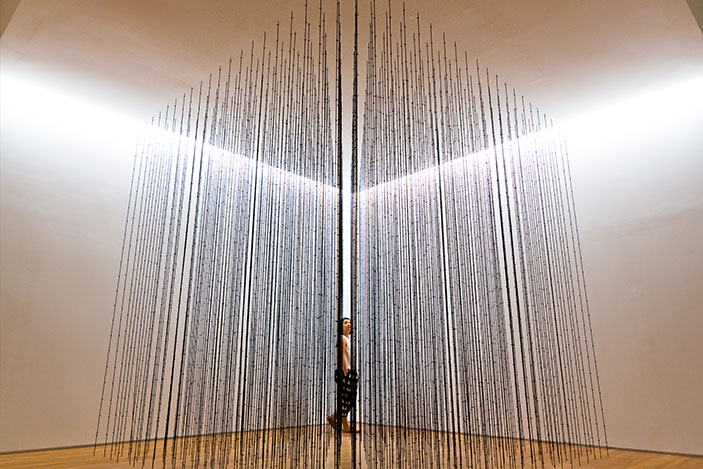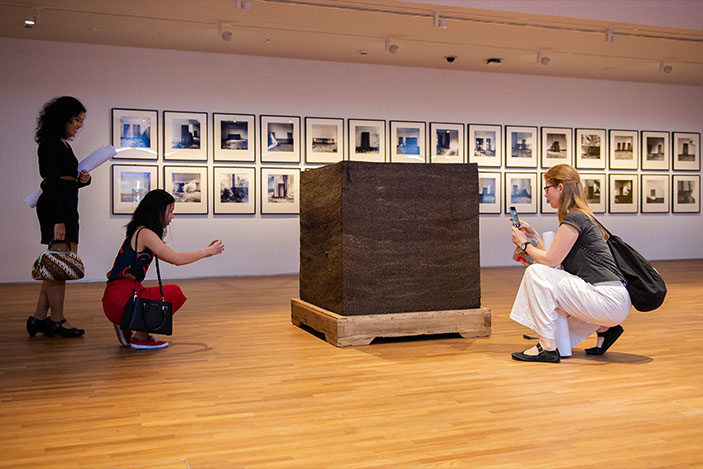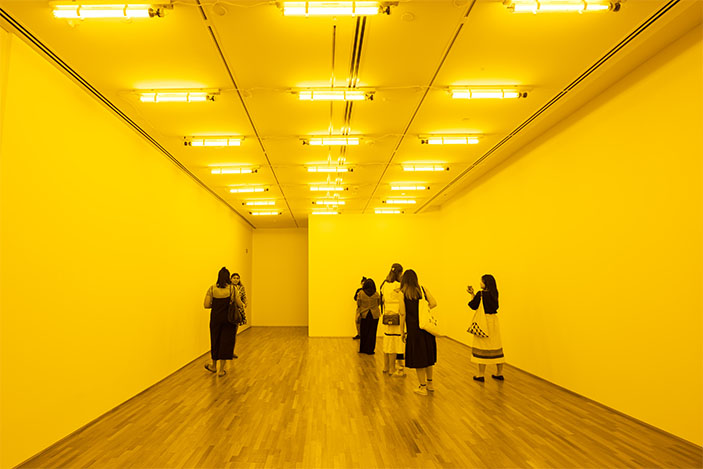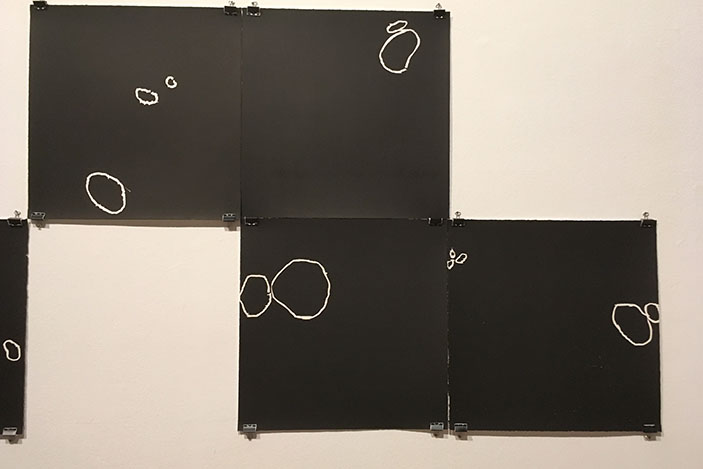WE HAVE had the extremes of art come through Singapore in the past few days.
Rolls-Royce and Faberge put their heads together and laid the unique Spirit of Ecstasy Fabergé Egg costing untold sums of money for an anonymous buyer.
Meanwhile, over at the National Gallery Singapore and the ArtScience Museum, the Minimalism movement got a good airing as part of Minimalism: Space. Light. Object.

The minimal approach to the title is a good prelude to the works spread through the Gallery. Some 150 pieces by over 80 artists and 40 composers curated over more than two years. It’s the first showcase of the art form on a large scale here.
As an evolving form, Minimalism is an inclusive medium. It allows for the use of the ordinary in projecting ideas and commenting on philosophical and existential notions. Many of the works need to be explained for the benefit of the viewer. What is a piece of string in the shape of a triangle about, you may wonder, looking at Fred Sandback’s triangle of yarn in Untitled (Learning Triangle)?
And the artist can spin a yarn to justify his work’s raison d’etre.
You Might Also Like To Read:
Who Is Responsible When AI Fails?
How Many Eggs Do We Eat In Singapore?

The Faberge Egg, on the other hand, oozes exclusivity and is about that immediate wow factor. It’s about precious metals, engineering and that little surprise when the egg is opened. In the case of the current egg, it’s the representation of the Spirit of Ecstasy, the emblem of Rolls-Royce that graces the bonnet of the luxury car.
The Spirit of Ecstasy Faberge Egg is only the second to be commissioned in the ‘Imperial Class’ since 1917. And prior to that, since the House of Faberge came to being in 1842 Russia, there have only been 50 made in this exclusive category.
Article Follows…
While you may be lucky to get a fleeting glimpse of the Spirit of Ecstasy Faberge Egg before it’s squirrelled away somewhere posh in the world, you have five months to explore minimalism in Singapore, a country not particularly known for adopting this state of mind, preferring to be the biggest, most expensive, tallest, grandest….
Singapore probably gravitates towards the Faberge Egg.
Material Gains
Minimalism digs to the core of the work by stripping away the excesses. Developed in the USA in the 1960s, its ideology seems to be evident in some of the Eastern philosophies brought about by Buddhism and Hinduism.
These elements have been incorporated into the exhibition in Singapore, with Asian artists presenting their works. As an ever-evolving art form, this is to be expected, and soon Minimalism will incorporate the digital world to a greater extent.
But mostly, Minimalism involves common materials like cord, barbed wire, earth, wood, resin, fluorescent tubes, pu’er tea, sunflower seeds, fabric, canvas, stainless steel.

Faberge’s route is headed in the opposite direction. Weighing in at 400gms, the Spirit of Ecstasy Faberge Egg has 18K white gold, rose gold, 10 carats of round white diamonds, amethyst and lots of handcrafting.
It’s about expressions of opulence with an end result that is jealously guarded by a rich person, which makes for their rarity while elevating their value immeasurably.
In 2015 a scrap metal dealer paid US$14,000 for a Faberge egg at a US flea market. He learnt that it was the Third Imperial Easter Egg, designed by the House of Faberge for Tsar Alexander III in 1887 and worth an estimated $33 million.

Importance To Art
A common element between the Faberge eggs and Minimalism is possibly their importance in their respective contributions to art.
Their presence in Singapore at the same time points to the importance of the Republic’s role as a location.
“We are proud to showcase the Egg for the first time in Asia, here in Singapore. Customers here are the ‘tastemakers of the region’ in a place,” explained Josina von dem Bussche-Kessell, Faberge’s Business Development and Global Sales Director of the rare sighting of the Spirit of Ecstasy Faberge Egg.
Article Follows…
Singapore’s recent focus on art as a means of attracting tourists and raising awareness to the soft power of this medium is beginning to bear fruit.
Another point of convergence is their eventual value as unique items. While Minimalist works and Faberge Eggs may come from contrasting sources, as they are worked into their final forms, the end results become invaluable for the creative process and ingenuity imbued in them.
And their value as lessons for posterity, and artefacts will be elevated.
Anyone attending this year’s showpiece at the National Gallery will have to minimise their expectations after last year’s rambunctious Yayoi Kusama spectacle. But it’s important to bear in mind that there are few artists who are so celebrated in the world. Most artists fall into other categories that are important for their roles in the larger picture being painted and that continues to be developed.

Walking through the National Gallery and the ArtScience Museum, you’ll come across items on the floor, sounds, coloured sheets forming a labyrinth in Peter Kennedy’s Neon Light Installations 1970-2002, Mona Hatoum’s Impenetrable barbed wire installation that tells a compelling story, and walk into Olafur Eliasson’s Room For One Colour where you’ll be drained of colour.
While many of the pieces will compel you to stay longer and consider the artist’s perspective as you try to rationalise it in today’s context, you could almost hear someone standing in front of Tan Ping’s 60 x 60 with its white squiggles on a black surface, or Sandback’s Untitled (Leaning Triangle) — yarn stretched in the form of a triangle — saying: “I could have done that.”
But you didn’t.
And it’s important to understand that.
You can enjoy Mimalism: Space. Light. Object. until 14 April 2019. Visit http://www.minimalism.sgfor more information.
For a rare glimpse at the Spirit Of ecstasy Faberge Egg, try your luck by emailing Joanna.kupis@faberge.com or sending a WhatsApp message to +44 7780 112319























